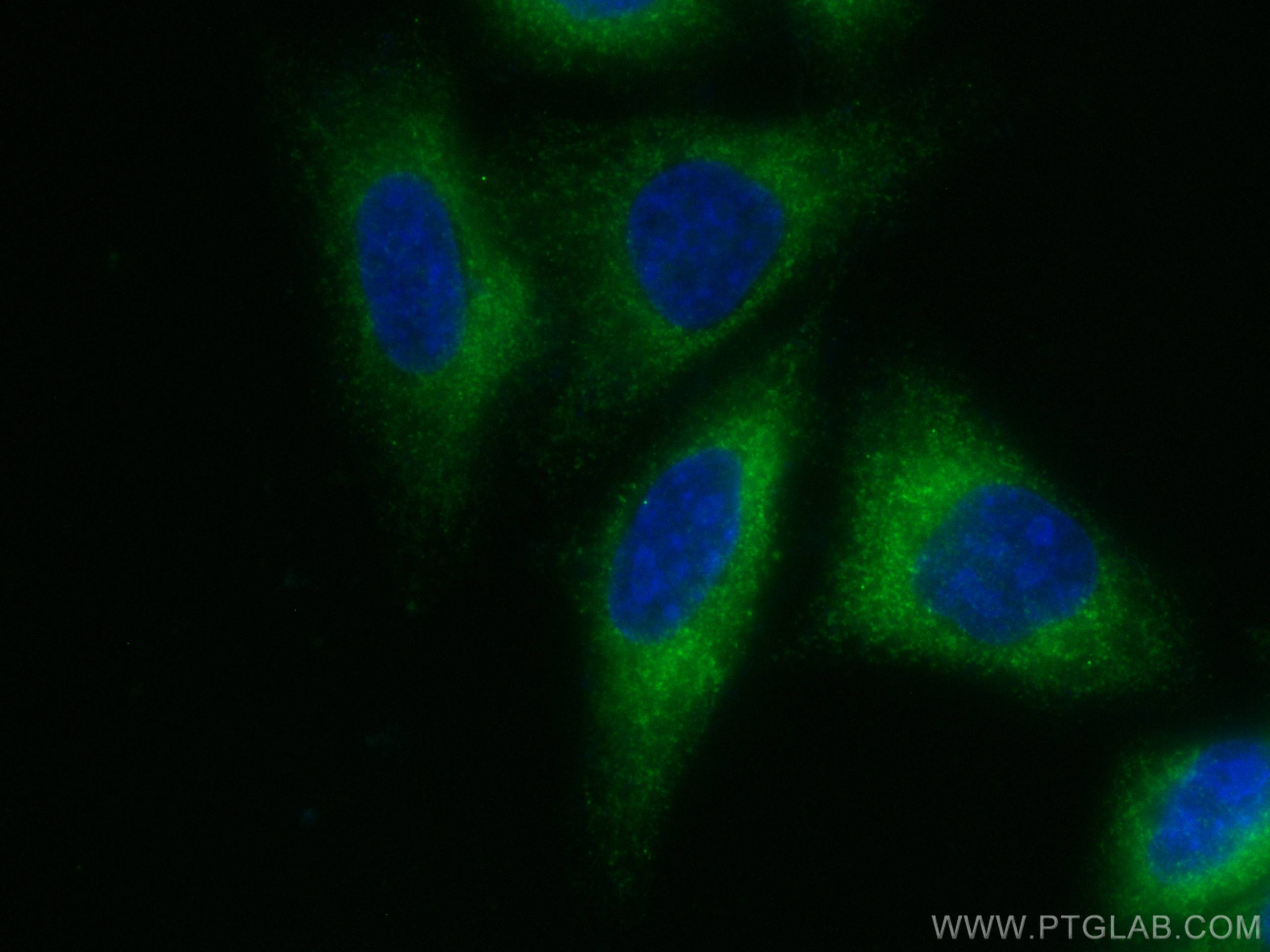Tested Applications
| Positive IF/ICC detected in | HepG2 cells |
Recommended dilution
| Application | Dilution |
|---|---|
| Immunofluorescence (IF)/ICC | IF/ICC : 1:50-1:500 |
| It is recommended that this reagent should be titrated in each testing system to obtain optimal results. | |
| Sample-dependent, Check data in validation data gallery. | |
Published Applications
| IF | See 1 publications below |
Product Information
CL488-66910 targets INF2 in IF/ICC applications and shows reactivity with Human samples.
| Tested Reactivity | Human |
| Cited Reactivity | mouse |
| Host / Isotype | Mouse / IgG2a |
| Class | Monoclonal |
| Type | Antibody |
| Immunogen | INF2 fusion protein Ag17043 Predict reactive species |
| Full Name | inverted formin, FH2 and WH2 domain containing |
| Calculated Molecular Weight | 1249 aa, 136 kDa |
| Observed Molecular Weight | 150-170 kDa |
| GenBank Accession Number | BC008756 |
| Gene Symbol | INF2 |
| Gene ID (NCBI) | 64423 |
| RRID | AB_2919386 |
| Conjugate | CoraLite® Plus 488 Fluorescent Dye |
| Excitation/Emission Maxima Wavelengths | 493 nm / 522 nm |
| Form | Liquid |
| Purification Method | Protein A purification |
| UNIPROT ID | Q27J81 |
| Storage Buffer | PBS with 50% glycerol, 0.05% Proclin300, 0.5% BSA , pH 7.3 |
| Storage Conditions | Store at -20°C. Avoid exposure to light. Stable for one year after shipment. Aliquoting is unnecessary for -20oC storage. |
Background Information
INF2 is a member of the formin family of actin-regulating proteins. INF2 is peripherally bound to the cytoplasmic face of the endoplasmic reticulum (ER). Mutations in the formin gene INF2 cause focal segmental glomerulosclerosis. The predicted MW of INF2 is around 136 kDa, while higher molecular mass from 140-200 kDa has been reported in literature (26383224,20493814,19366733).
Protocols
| Product Specific Protocols | |
|---|---|
| IF protocol for CL Plus 488 INF2 antibody CL488-66910 | Download protocol |
| Standard Protocols | |
|---|---|
| Click here to view our Standard Protocols |
Publications
| Species | Application | Title |
|---|---|---|
Kidney360 AMPK-SP1-Guided Dynein Expression Represents a New Energy-Responsive Mechanism and Therapeutic Target for Diabetic Nephropathy |



